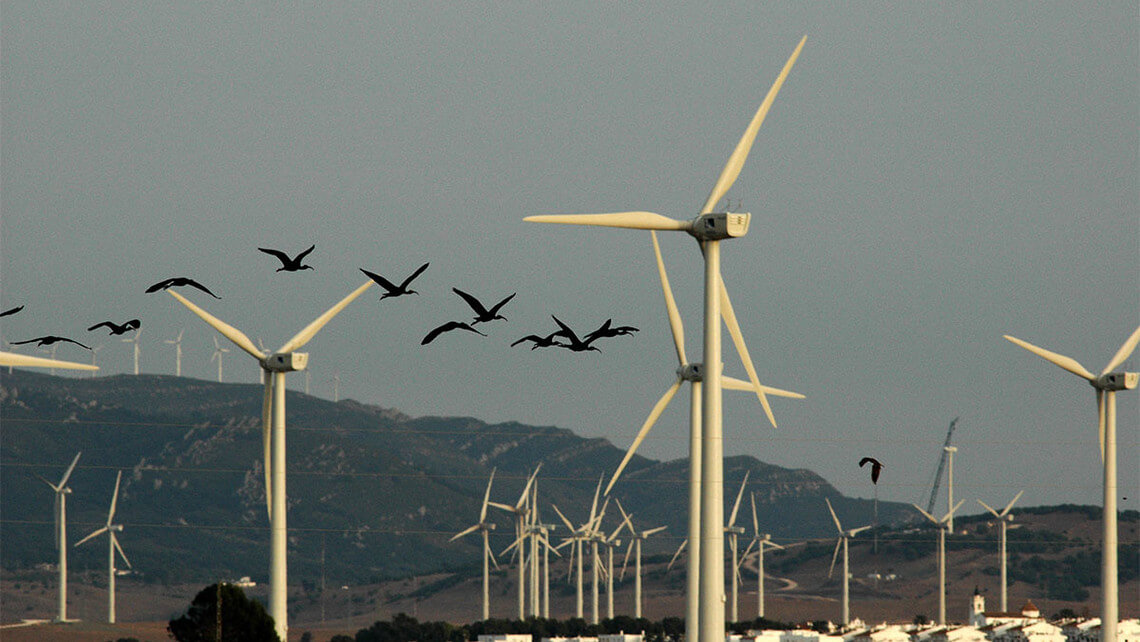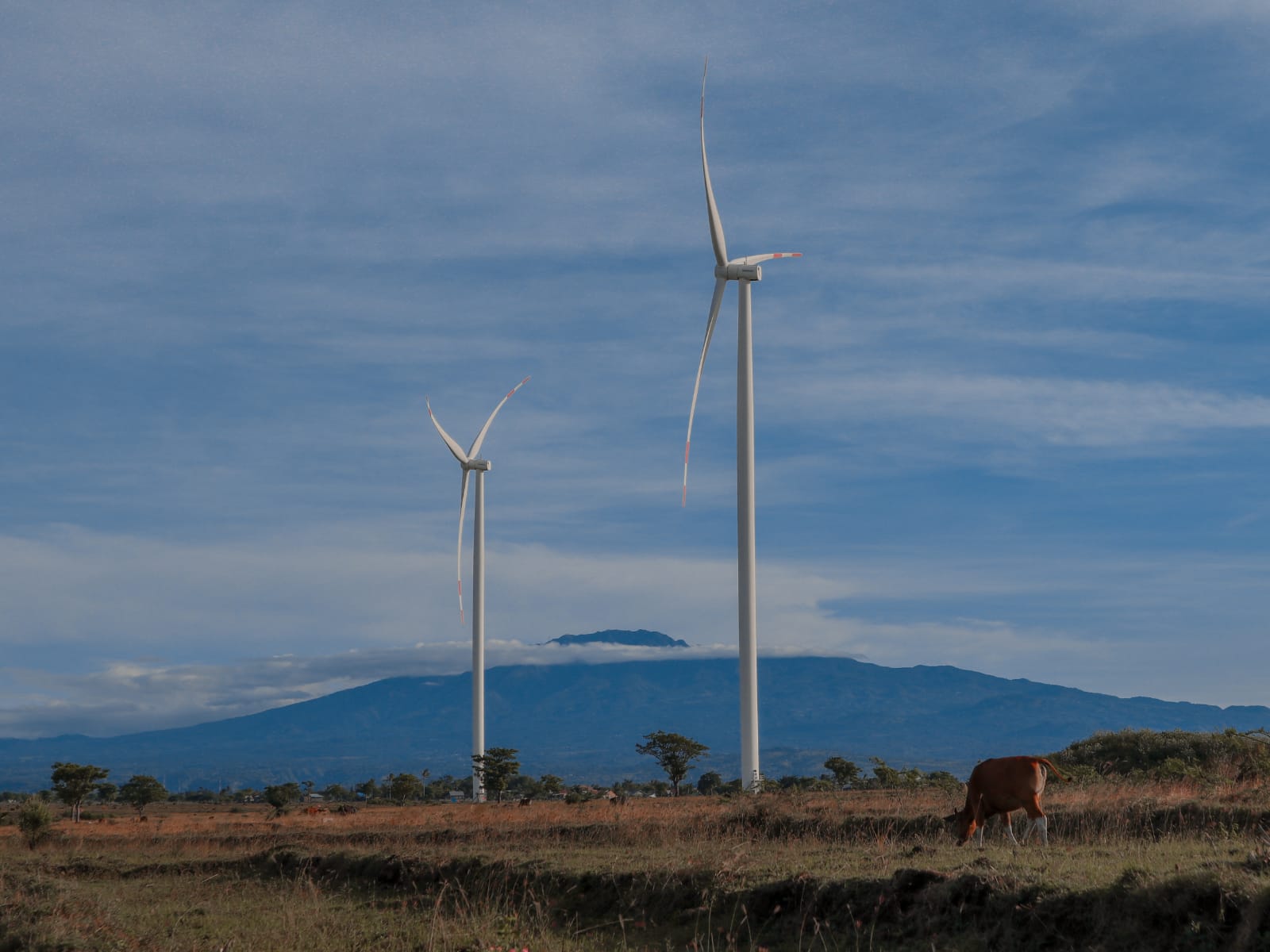
- Renewable energy is forecasted to be the fastest-growing power source for the next 20 year
- Studies in the last decade have found that windfarms do kill hundreds of thousands of birds and bats per year.
- A key challenge facing the wind industry is the potential for turbines to adversely affect wild animals both directly, via collisions, as well as indirectly due to noise pollution, habitat loss, and reduced survival or reproduction.
Renewable energy is forecasted to be the fastest-growing power source for the next 20 years. A key challenge facing the wind industry is the potential for turbines to adversely affect wild animals both directly, via collisions, as well as indirectly due to noise pollution, habitat loss, and reduced survival or reproduction. Among the most impacted wildlife are birds and bats, which by eating destructive insects provide billions of dollars of economic benefits to the country’s agricultural sector each year.
Studies in the last decade have found that windfarms do kill hundreds of thousands of birds and bats per year. As the wind power industry continues to grow in the US as the nation pushes towards a cleaner energy network, it is possible these figures are now in the millions. But there is hope as researchers and manufacturers are stepping up to the challenge.
How do Wind Turbine Impacts The Wildlife

With an increasing number of industrial-scale wind turbines around the world, numerous reports are surfacing to suggest that noise, infrasound and stray voltage (dirty energy) may be harmful to livestock and wildlife.
While evidence is largely anecdotal, incidences of mass die-offs of farm animals, chickens laying soft-shelled eggs, high animal miscarriage rates and disappearance of wildlife near turbines provide pause for reflection. These and other incidents suggest a need for scientific study to determine safety before additional wind energy facilities are erected across the U.S., including several proposed in San Diego’s East County.
Read More :
In Germany, a dozen dead porpoises washed ashore near the site of a newly completed wind farm and authorities did not rule out the wind facility as potential causes. Some have suggested that the beaching of 130 dolphins at Cape Cod may be related to wind turbine facilities nearby. At high levels, sound from military sonar has been shown to be fatal to marine mammals, the National Resources Defense Council has reported.
Animals can also be impacted negatively by stray voltage, also known as dirty electricity. Cows living near power lines, for example, have experienced reduced milk production and even been observed “dancing” in fields due to electricity in the ground, according to scientific research presented by experts at the International Conference on Production Diseases in Farm Animals at Michigan State University.
How to Protect The Animal From the Impact of Wind Turbines?

1. Safer Locations
The simplest way to keep birds and bats away from wind turbines is to not build wind turbines where lots of birds and bats are known to fly. It’s not always that simple, though, since many of the open, treeless expanses that attract birds and bats are also prime locations for harvesting wind.
Already-altered habitats like food farms make good turbine sites from a wildlife perspective, according to the American Bird Conservancy, but the main thing to avoid is any habitat deemed an “Important Bird Area.” These include places where birds congregate for feeding and breeding, like wetlands and ridge edges, as well as migratory bottlenecks and flight paths used by endangered or declining species.
Environmental assessments are now a key part of planning new wind farms, often using mist nets, acoustic detectors and other tactics to assess bird and bat activity before deciding on turbine sites.
2. Ultrasonic “Bom Boxes”
Birds are mostly visual animals, but since bats use echolocation to navigate, sound might offer a way to repel them from wind farms. That’s the idea behind ultrasonic “boom boxes,” which can be attached to turbines and emit continuous, high-frequency sounds between 20 and 100 kilohertz.
Bats’ sonar is good enough to work around such interference, researchers reported in a 2013 study, but it might still be enough of a hassle to keep them away. “Bats can actually adjust their echolocation under jamming conditions,” they wrote. “Bats are, however, likely ‘uncomfortable’ when broadband ultrasound is present because it forces them to shift their call frequencies to avoid overlap, which in turn will lead to suboptimal use of echolocation or they may not echolocate at all.” Between 21% and 51% fewer bats were killed by boom-box turbines than by turbines without the device, the study’s authors added, although some technical hurdles remain before the technique has widespread practical value.
“Our findings suggest broadband ultrasound broadcasts may reduce bat fatalities by discouraging bats from approaching sound sources,” they wrote. “However, effectiveness of ultrasonic deterrents is limited by distance and area ultrasound can be broadcast, in part due to rapid attenuation in humid conditions.”
Read More :
The Future of Wind Turbines : No More Blades
Are Vertical Axis Wind Turbines Better?
3. New Design
In the Energy Policy study, researchers found that the size of the turbine and the length of the blades can make a substantial difference. Just making the turbines taller and the blades shorter reduces the impact on birds, the study’s authors report. In addition to regulating the location of turbines, they suggest, wind-energy policies should promote greater turbine heights and shorter blades to protect birds.
And then there are the more dramatic reinventions. A concept known as Windstalk, for example, doesn’t even use spinning blades. Developed by New York design firm Atelier DNA, it’s meant to harness wind energy with giant, cattail-like poles that mimic “the wind sways a field of wheat, or reeds in a marsh.” Other alternatives include vertical-axis turbines, sail-like wind dams, high-flying energy kites and a helium-filled blimp that would fly 1,000 feet high, placing it above most birds and bats.
References :
[1] Advancing Wind Energy and Avoiding Wildlife Conflict




